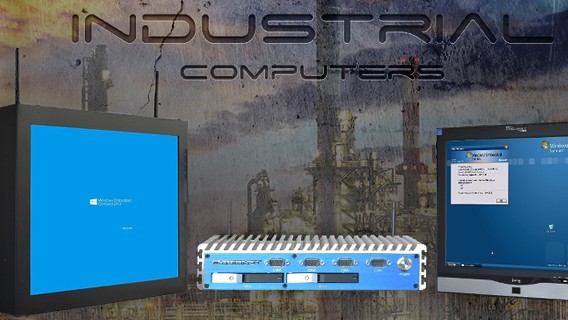Cloud computing has the power to make the oil and gas industry more efficient and eco-friendly on every level.
Cloud computing provides a decentralized place to store and access data with virtually no limit, which makes data analysis much easier for those making the big decisions in the gas and oil industry.
More data analysis means more efficiency and less waste because it dampens the need for guesswork and roots out what doesn’t work.
We’re going to show you how the oil and gas industry is implementing cloud computing to improve how oil and gas are produced, how they’re stored and shipped, and how efficient the entire process can be when data analysis is front and center.
The oil and gas industry is gathering, storing, and analyzing their data on the cloud
Article Guide
There’s a reason the oil and gas industry is projected to spend up to 12.4 billion dollars per year by 2030 on cloud computing and analytics: the return from increased production and efficiency is even higher.
Internet-of-Things devices are grabbing up data on oil fields, off-shore platforms, shale mines, refineries, and even in the trucks and ships that transport the final product.
But where is this data going?
Data Storage
Private servers used to be the answer for data storage, but private servers are extremely expensive to host and maintain.
They’re also not terribly scalable–the hard drives are finite, the physical space for the hard drives is finite, and data storage requirements become a guessing game when you’re dealing with the firehose of data being created by oil and gas production.
By contrast, cloud storage is scalable on the fly. The amount of data determines how much you spend on data storage. If the need for more storage arises, the cloud expands accordingly. A cloud company knows how to store, maintain, and expand their own storage locations better than a gas company–essentially, it’s letting everyone do what they do best.
Plus, outsourcing data storage to the cloud saves oil and gas companies the IT overhead cost they don’t want to eat.
Supercomputing and Data Analysis
The oil and gas industry is using cloud computing supercomputers to analyze all of the data being collected through devices and sensors.
When most people think “cloud computing,” they think storage. And storage is a huge part of it. But lately, cloud services are making supercomputers possible for industries that never had access to that level of processing.
Supercomputers are faster and more powerful than standard computers, and can analyze the massive amount of data coming in from oil and gas operations at record speeds. With cloud computing, companies can essentially “rent” supercomputers as needed, without the upfront spend and maintenance associated with computers of that magnitude.
Cloud Computing and Robotics
BP, Equinor, Repsol, TotalEnergies, Sinopec, ExxonMobil, and Ouro Negro (each a big name in the oil and gas industry) all deploy robotics as part of their regular operations. From inspection to maintenance, detection, construction, cleaning, and heavy labor robots are found on every level of energy production.
What the cloud brings to robotics, and to the oil and gas industry, is the concept of “Robots as a Service,” or RaaS. Based on the “Software as a Service” idea, RaaS uses cloud programming and physical robotic hardware to allow industries to scale production as needed without having to become a part-time robotics company. RaaS is a rental model, essentially, but it uses the cloud for programming and controlling the robots, and for monitoring and even maintaining them from a distance.
It’s easy to see where the needs of the oil and gas industry dovetail with robotics. Industrial robots are efficient, they can repeat a task thousands of times without changing or needing breaks, and they can operate in locations that may be unsafe for humans.
Data connectivity and security makes dangerous operations safer
Cloud computing can secure valuable data without losing the connectivity and accessibility needed to perform safe drilling operations.
Oil drilling is complicated, dangerous, and requires extreme mathematical precision. This drilling also takes place in less-than-hospitable terrain like deep deserts, frigid waters, or far underground. The only way to successfully drill oil in these conditions is through accurate sensor data. Without this data, equipment breaks down, drilling locations are wrong, accidents happen, etc.
The average off-shore oil platform has anywhere from 350,000 to half a million sensors on it. These sensors produce tons of data to aid with processes from production to maintenance. The amount of data just one such oil platform produces is impressive, but multiply it by every platform and drilling site and you have a problem.
The problem is two-fold: the data from these sensors needs to be readily available to the people who drill oil and monitor the process, and the data must be secure from bad actors.
Managing storage, data, and analysis through the cloud is more secure than private data servers. Cloud companies have more IT funding, more consistent security, and a stronger need for current security compliance measures than a private IT department or data center.
Cloud Computing and Green/Climate Efforts
Scientists and the UN have both stated that global emissions will need to drop by 7.8% per year in the next 10 years to prevent further temperature increases across the globe. And gas an oil are still the #1 source of energy in the world, meaning that we need to work hard to decrease the greenhouse gasses produced by energy production.
Luckily, the data collection and analysis cloud computing provides makes real change possible. And not only a boon to the green efforts that will sustain the Earth, but to efficiency and production as well. There’s literally no downside.
Cloud computing and advances in AI are allowing oil and gas companies to locate and prevent things like natural gas flare ups and leaks, which both create huge amounts of carbon emissions.
For instance, methane (the 2nd biggest cause of global warming) is produced by “flaring.” Flaring is a process where the extra gas produced by energy production is burned rather than left around to cause problems. Tech companies like Flare.iq are using sensors, AI, and cloud computing to detect these methane leaks, helping companies shut them down and turn that wasted gas to more efficient use.
Of course, just cloud computing on its own will help, even independent of the emissions produced by the oil and gas industry. A recent report from the International Data Corp predicted that the computing efficiency created by cloud computing might be able to reduce or prevent up to one billion metric tons of carbon dioxide in the next few years.
So, just switching to cloud computing will undo a lot of the damage created by the need for more computing power from less efficient sources.
Cloud computing in the oil and gas industry requires on-the-ground devices and computers
Cloud computing puts data control and analysis in the hands of even the smallest companies, turning their IT investments into your day-to-day tools. In the oil and gas industry, this means safer drilling, better analytic insights, more efficient production, and cleaner skies.
Increasing cloud computing in oil and gas means more sensors, more industrial tablets, and more industrial computers on the ground and in the trenches of oil and gas production. Computers tough enough to survive even the most grueling conditions in the energy business, and to help you access all of your data at any time.
Contact an expert at Cybernet to talk about the durable industrial computing devices you’ll need to implement a strong cloud computing solution. Also follow Cybernet on Facebook, Twitter, and Linkedin to stay up to date on this and other relevant topics.
Industrial Computing: Changes in the Oil and Gas Industry
September 8, 2015
The field of industrial computing has evolved to such a degree that the devices that are currently available transform the very industries that they are deployed in. There are a number of computers suitable for a…
0 Comments6 Minutes
How Industry 4.0 Will Change the Oil and Gas Industry
April 1, 2021
As it has on every other industry, the COVID-19 pandemic has had a marked impact on the Oil and Gas Industry. Already trending downward before the virus, worldwide public health lockdowns caused oil consumption to…
0 Comments10 Minutes
You Can't
Learn from a Pop-up
But we can deliver knowledge to your inbox!
We dive deep in the industry looking for new trends, technology, news, and updates. We're happy to share them with you.
Knowledge, News, and Industry Updates Right in Your Inbox




